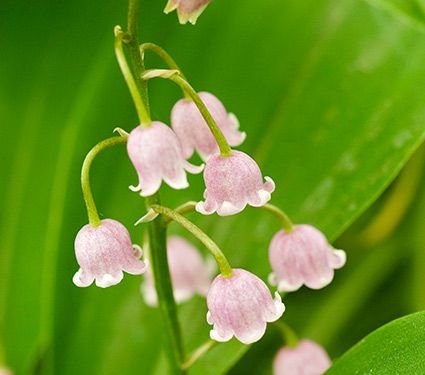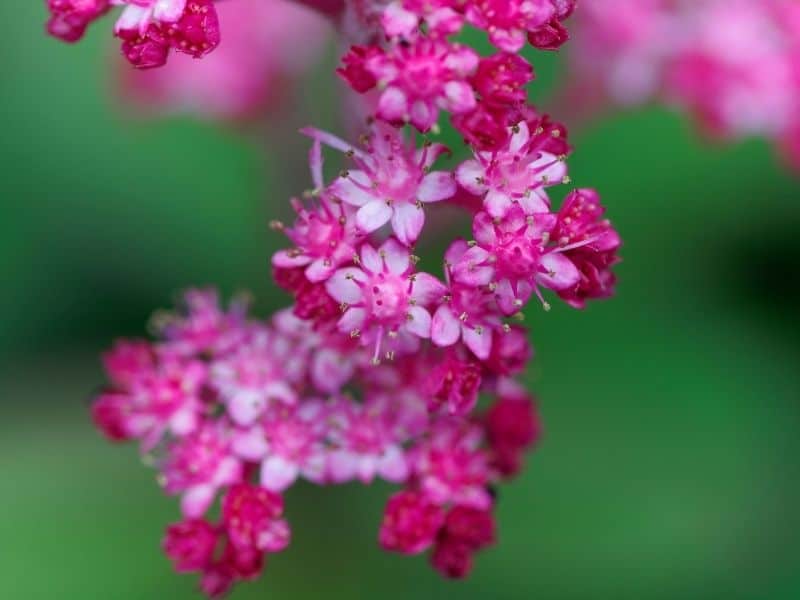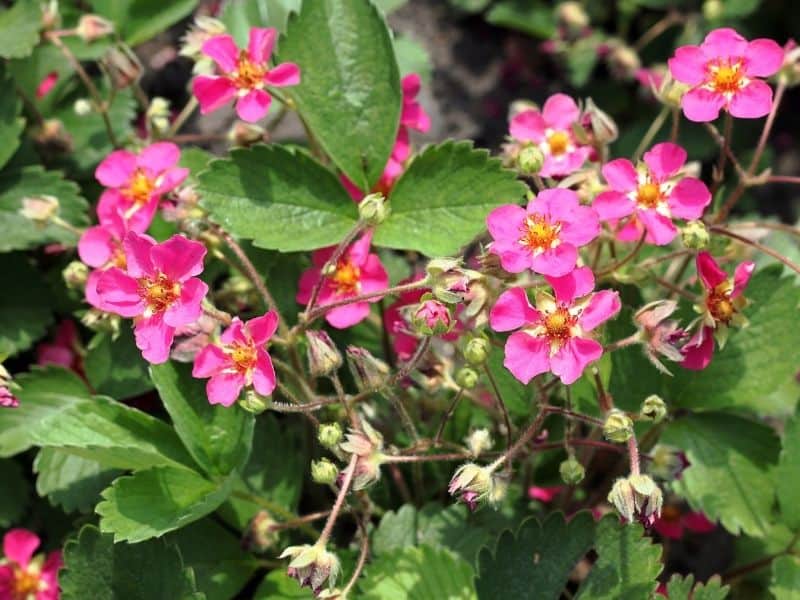Pink perennial blooms can add a stunning touch of beauty to any outdoor space, making them a highly desirable addition. Pink is a calming color that symbolizes tenderness, love, and femininity, as well as kindness. Pink is commonly associated with being generous.
1. Bergenia

The sight of fully bloomed pink roses is truly awe-inspiring, with their large rosettes adding to the shine of their glossy green leaves.
2. Moving on to the next flower, we have the aster.

These beautiful blooms, resembling daisies, are in season from late summer until October. For those who prefer a pink and more condensed version of daisies, the Aster is an ideal option for your garden or hanging basket. Another fantastic choice is Impatiens.

Opt for the pink variety and hang a basket full of pink Impatiens to make a butterfly and hummingbird-friendly area. However, keep in mind that these plants don’t fare well in frosty weather and can’t handle extremely low temperatures. It’s essential to remember this.
4. Delphinium

In the summertime, this charming shrub showcases its spiky and pink blooms. It’s a popular choice for gardeners who prefer to plant it at the back of their flower gardens due to its height and preference for warm, sunny locations with ample water and sunlight. This plant is commonly referred to as Coral Bells.

Just like how pink represents women who are gentle but strong, these pink dots may seem fragile, but they are actually quite sturdy. The plant itself is surprisingly resilient and can even do well in direct sunlight, although it prefers to be in partial or full shade. These Coral Bells produce bright pink flowers when they bloom and can grow in zones 3 to 10. Another beautiful addition to any garden is the Lychnis Coronaria.

To fully enjoy the colorful blooms in your yard, it’s a good idea to put on your sunglasses before stepping outside. The vibrant hues of the flowers can be so intense that they may temporarily impair your vision. One type of flower that particularly stands out in terms of its vividness is the dahlia.

The world can be viewed as a grand stage, where each corner is like a sphere that reveals the beauty of flowers blooming for all to witness. One of these flowers is the chrysanthemum.

Enjoy the ease of caring for this plant that can thrive in a compact area. While not all lilies are pink, this variety is just as gorgeous as the rest. During hotter weather, it requires more shade than other flowers to keep its bright pink color. This particular plant is called Lily of the Valley.

The Foxglove is a pretty little flower with a surprisingly sturdy constitution. Its charming name and lovely pink petals are not the only things it has going for it- when you crush its blossoms, a delightful fragrance is released. This flower manages to be both delicate and fragrant all at once.

If you’re someone who is fond of the color pink, then foxgloves might be the ideal flower for you. With a stunning range of hues falling under the pink spectrum, this flower is definitely eye-catching. The plant produces an abundance of delicate bell-shaped blossoms, making it a show-stopper.

These petite plants grow on the ground and have pretty pink blooms that catch everyone’s eye. The flowers come in vibrant neon shades during late spring or early summer and can grow up to two feet tall. They belong to the Rodgersia family.

The magnificent bloom that we call Fragaria is named after Rear-Admiral John Rogers, who first laid eyes on it while exploring the Pacific in the 1800s. Its vibrant pink petals contrast strikingly with the rich green leaves that provide the perfect setting for this stunning flower.

It’s important to keep in mind that you shouldn’t expect a huge haul of fruit from the lovely pink blooms of the wild strawberry, which is also commonly referred to as “wild strawberry.” Now onto our next floral friend: tulips!

Don’t miss out on these gems when they start blooming. Although tulips are perennials, their blooming season is short and only occurs during springtime. Next on the list is lupine.

You don’t have to be an expert gardener to grow these beautiful hardy hibiscus plants. They are incredibly resilient and can withstand a lot. You might even spot them growing along the roadside, whether it’s a busy highway or a quiet country lane.

If you’re living in a tropical climate or in areas with zone 4 or higher, then you can nurture the Hardy Hibiscus and enjoy the stunning pink flowers it produces. Another beautiful flower that you can consider growing is the Peony.

The delightful Oriental lily comes in a variety of colors, but it’s hard to resist the allure of the pink-hued ones. These stunning flowers produce magnificent, flourishing pink petals that exude a powerful aroma that lasts for several weeks.

When you think of lilies, the first thing that comes to mind might be Easter and the beginning of spring, and perhaps you envision them as being completely white. However, oriental lilies are available in a beautiful and striking shade of pink. Moving on to another type of flower, the Japanese anemone is worth mentioning.

When you witness the abundance of blossoms that emerge in early October, it’s easy to develop an enamored fondness for the delicate Anise hyssop flower.

Agastache, also referred to as Antirrhinum, is a plant that appears to have the potential to sprout a mustache on its upper lip.

Let’s admire the delicate and charming tube-shaped blossom which is overflowing with stunning shades of pink. Its name itself suggests that pink is its favored color. This flower is commonly known as the creeping phlox or hybrid spring phlox.

This particular plant is appropriately named for its ability to create a thick and lush ground covering. Its stunning pink blooms are truly a sight to behold. Moreover, it’s one of the easiest flowering plants to cultivate and takes very little effort to maintain. Let’s talk about hollyhocks!

The yard is graced with the breathtaking pink blooms and fast growth of hollyhocks as they burst into view. These beauties effortlessly propagate by self-seeding.
Let’s move on to number 24 – the Red Fox.

Veronica Spicata is the scientific name of this particular plant that is commonly known for its pink flowers. Despite its name, the flowers come in varying shades of pink from subtle pale pinks to more vibrant reddish magenta hues. It’s interesting to note that the name may suggest red blooms, but in reality, it’s all about beautiful shades of pink. Photo credits go to Pinterest, and the source of this information is Garden Lover.
